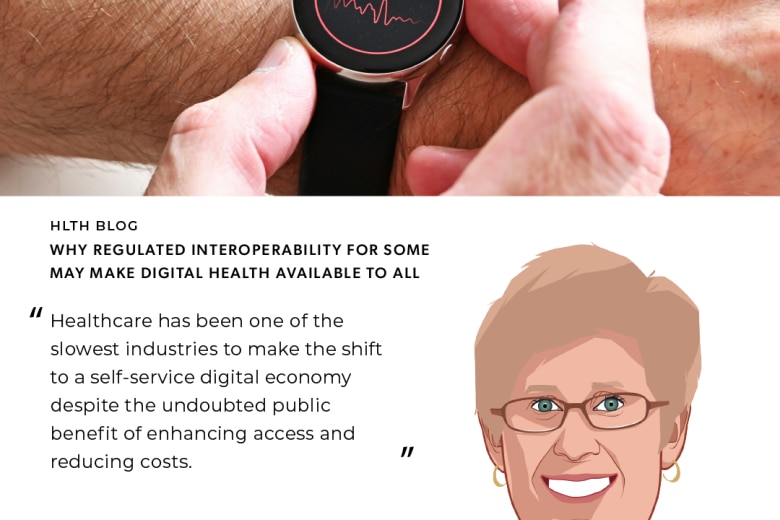Top 3 Reasons Healthcare Organizations Are Investing in Patient Engagement Part 3: Marketing and Customer Retention
In the previous posts in this series I’ve been sharing my experience moderating discussions on personalized care and patient engagement during the Healthcare Leadership Conference at InterSystems Global Summit. While the first two commonly-cited rationales for investing in patient engagement were paving the way for success in value-based care and improving cost savings through efficiency (link to Post #2), the third and final rationale is marketing and customer retention.
Engaging, personalized service is appealing in almost any industry. Whether it’s the deli server who remembers your favorite sandwich, or Amazon serving up the next book in a series you’ve begun reading, personalization, in the context of an overall positive customer experience, makes you feel valued.
This kind of personalized patient engagement increasingly pays off for healthcare providers, despite the fact that patients themselves often don’t directly pay the bulk of their healthcare bills. According to McKinsey, in the last decade, deductibles for employees with employer-sponsored health insurance have grown by more than 120 percent. Further, consumers now directly control $330 billion a year in out-of-pocket healthcare expenses, and can, through their choices, impact more than 61 percent of all healthcare spending.
Often, patient engagement and personalization begin digitally prior to an in-person encounter.
Seventy-seven percent of consumers say they use online reviews as a first step in finding a new physician. A generic positive presence online is just the starting point. Patients will return to providers that meet them on their terms, in the right language, right medium, and in the right tone. According to Neil Williams, the Director of Innovation at Medicom Innovation Partner–a Philips Medisize Company which designs systems around patients, the burgeoning “Internet of Me” provides of a number of opportunities to deliver patients highly tailored motivational messages, which his company personalizes to meet the specific needs of a 9-year-old versus a 90-year old.
In addition to contributing to better health outcomes, this kind of tailored patient engagement translates into dollars for provider organizations both through patients’ direct spending and through reimbursement. Under the Affordable Care Act (ACA), Hospital Consumer Assessment of Healthcare Providers and Systems (HCAHPS) scores now determine two percent of Medicare reimbursements.
In the near future, conference participants also expect to see increased personalization of care through precision medicine, which takes into account an individual’s unique genetic makeup in prescribing particular drugs and other therapies.
They’re Going for It, Despite Obstacles
Participants in the InterSystems Healthcare Leadership Conference highlighted plenty of the challenges they faced in effectively engaging patients, including:
- Compiling a comprehensive health record about an individual; providers are reluctant to share information, and today most patients have access to multiple portals that share only fragmented views of their whole health picture.
- Patients in the poorest health are often the most difficult to engage, in part because they may lack motivation or a sense of self-efficacy.
- It can be tough to create apps that relate to dangerous substances—these and other potentially risky apps that could yield the greatest clinical value require a high level of Food and Drug Administration (FDA) approval, which takes time and resources.
- Protecting privacy is daunting as more and more data is created and shared.
- There is little understanding of what has and hasn’t worked with patient engagement in the past; we often hear only the success stories. It would be helpful to track both successes and failures for the ongoing benefit of innovators.
Despite these challenges, most conference participants were committed to pursuing patient engagement to some degree in both their personal and professional lives, and in many cases the two overlapped. For example, Laura Adams, President and CEO of the Rhode Island Quality Institute, described her own diagnosis of breast cancer several years ago as a gift that helped her to understand acutely and address patient priorities and experiences. While she and others are making significant progress toward a patient centric model of healthcare, the group acknowledged that achieving better health on a systemic level requires that patient engagement exist in the context of data and analytics, visionary leadership, and a surrounding culture that promotes health through everything from nutritious food to positive media messages.
For several years, a strong business case for provider-organization investment in patient engagement appeared to be lacking. After participating in the InterSystems Healthcare Leadership Conference, I am pleased to see consensus around several emerging. As more organizations continue to invest in these capabilities, I believe that the gap between where we are versus where we could be with patient engagement will close, driving us ultimately toward a more patient and family-centric approach to care with a stronger emphasis on prevention and wellness.
Read Part 1: Paving the Way for Value-Based Care
Read Part 2: Cost Savings through Efficiency
About the Author

Lygeia Ricciardi (@Lygeia)
Lygeia Ricciardi is an expert in digital health and patient engagement. She is the president of Clear Voice Consulting, LLC. Previously, she established and led the Office of Consumer eHealth at ONC at the US Department of Health & Human Services.




































